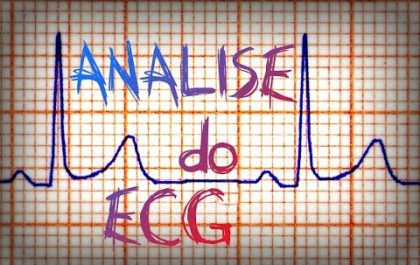Organic nitrates are among the oldest and yet most commonly used drugs in the chronic therapy of patients with angina and heart failure. Their use is based on 2 assumptions that remain, after decades of research, unproven. The first is an assumption of overall clinical safety: the majority of physicians believe that chronic therapy with organic nitrates is associated with an improvement in symptoms and has neutral or potentially beneficial effects on long-term patient outcome. A corollary of this concept is that nitrate tolerance is considered simply as the loss of a beneficial effect as opposed to the expression of potentially deleterious modifications such as sympathetic activation, increased oxidative stress, or endothelial dysfunction (discussed later). The second assumption is that the therapeutic effects of these drugs depend exclusively on changes in hemodynamic parameters (principally dilation of capacitance veins and conduit arteries).
Recently, both of these postulates have come under scrutiny as recent lines of evidence document that organic nitrates have previously unanticipated nonhemodynamic effects. Importantly, these changes have dichotomous implications, as confirmed by human in vivo studies. Some of these effects are protective (e.g., a protection that is similar to ischemic preconditioning), but others are potentially harmful, including increased oxidative stress (1), endothelial dysfunction (2), and cardiac autonomic dysfunction (3). In light of continued widespread use, we believe that these notions should be discussed, and that the traditional views concerning chronic therapy with organic nitrates should be critically revised.
Challenging the first of the postulates above, Münzel et al. (1) reported in 1995 that the sustained administration of nitroglycerin (glyceryl trinitrate) causes increased oxygen free radical bioavailability, a finding that led to the oxidative stress hypothesis of nitrate tolerance (reviewed in Münzel et al. [1], Gori and Parker [2], and Fig. 1). The accumulation of oxygen free radicals during chronic nitroglycerin therapy has been associated with endothelial dysfunction, with an increased arterial sensitivity to vasoconstrictors and with the development of abnormalities in a number of important enzymes involved in the regulation of vascular homeostasis, including the superoxide dismutase, protein kinase C, matrix metalloproteinases, and prostaglandin synthase (1,2). Furthermore, prolonged exposure to nitroglycerin has been shown to shift the physiologic balance between the sympathetic and vagal nervous systems in the modulation of cardiac heart rate and heart rate variability toward a prevalence of the sympathetic system, impairing baroreflex function and heart rate variability (3). Of note, such modifications should be considered relevant because they have been associated with an increased incidence of arrhythmias and a worse prognosis when observed in patients with coronary artery disease and/or heart failure (4). Two observations emphasize the clinical importance of these findings. First, they have been observed (or reproduced) in patients with coronary artery disease: for instance, nitroglycerin therapy enhances coronary artery vasoconstrictor responses to acetylcholine (5) and peripheral conduit arterial responses to angiotensin II and phenylephrine (6). Second, these deleterious effects are not limited to tolerance-inducing dosages: therapy with both nitroglycerin and isosorbide mononitrate, using formulations and dosing regimens that are commonly employed clinically, have also been shown to lead to the development of endothelial dysfunction (5,7). In aggregate, these vascular abnormalities seem to play a major role in the development of nitrate tolerance and the decreased anginal threshold observed in some patients during the daily nitrate-free interval (rebound angina [8]) (Fig. 1). Further, they suggest that we should not a priori assume that the effects of nitrates in terms of patient prognosis are necessarily neutral, and emphasize the need for large-scale trials testing the effects of long-term nitrate therapy.
Figure 1
View larger version (104K):
[in this window]
[in a new window]
[Download PPT slide]
Figure 1 Nitrate-Induced Nonhemodynamic Effects
Schematic representation of nitrate effects as shown in human studies. Prolonged nonintermittent administration causes a variety of modifications that lead to nitrate tolerance. A unifying hypothesis for an oxidative stress–based physiopathology of these modifications has been recently proposed (22). Intermittent administration also causes modifications that might alter vascular homeostasis. One single administration has been associated with induction of preconditioning. EC = endothelial cell; EPC = endothelial progenitor cell; NO = nitric oxide; ROS = reactive oxygen species.
Challenging the second of the postulates mentioned earlier, organic nitrates have beneficial implications that go far beyond their impact on cardiac loading conditions. In particular, intravenous or transdermal administration of nitroglycerin has been shown to trigger a protective phenotype that is similar to that induced by ischemic pre-conditioning and persists up to 48 to 72 h after interruption of nitrate therapy: a single 2- to 4-h application of nitroglycerin protects the vascular endothelium from experimental ischemia and reperfusion injury in healthy volunteers (9), and it has been associated with reduced electrocardiographic and echocardiographic evidence of ischemia during both coronary angioplasty and physical exercise in ischemic heart disease patients (10,11). Surprisingly, this nonhemodynamic property of nitrates seems to be mediated by release of oxygen free radicals, because administration of antioxidants blocks it (9). Because ischemic preconditioning (and its clinical correlate, pre-infarction angina) have been shown to be important determinants of patient prognosis (12), the possibility that such a protective state could be induced pharmacologically using "atypical" dosing regimens (for instance by administering nitrates for 2 to 4 h per day in patients at high risk of coronary events) has a clinical potential that deserves being tested in large-scale trials.
Recent experimental findings provide some insight into the mechanism(s) of these unexpected effects (Fig. 2) and have important implications regarding how nitrates should be used. The evidence of a beneficial preconditioning effect of nitrates suggests that we should develop a new conceptual framework for these drugs: acute nitroglycerin administration, by exposing the mitochondrial milieu to subtoxic quantities of oxygen free radicals, leads to the induction of several genes that cause anti-ischemic protection, resulting in a phenotype similar to ischemic preconditioning (9,10,13). At the same time, the accumulation of these free radical species over prolonged periods of time, as occurs during chronic nitrate therapy, has the potential to cause the negative effects described earlier (1,2). Taken together, these lines of evidence suggest that nitrate-induced oxygen free radical production seems to explain both of the acutely protective—but chronically deleterious—effects of these drugs.
Figure 2
View larger version (76K):
[in this window]
[in a new window]
[Download PPT slide]
Figure 2 The Mechanism of the Dichotomous Biological Effects of Nitrates
When administered acutely, nitroglycerin is biotransformed in the mitochondrial matrix by the aldehyde dehydrogenase (ALDH) to release a nitric oxide–related speci
es (NOx). At the same time, nitroglycerin causes uncoupling of the mitochondrial respiratory chain and a burst of oxygen free radicals (ROS). Acutely, nitroglycerin activates a cascade that results in a phenotypic protection that is similar to ischemic preconditioning. The sudden increased bioavailability of nitric oxide and oxygen free radicals seems to have a critical role in the cascade that leads to nitrate preconditioning. Of note, isosorbide mononitrate, which has an extramitochondrial bioactivation (and ROS production), does not cause preconditioning (23). On chronic administration, nitrate-induced ROS production causes a number of adverse effects, which include rebound ischemia, endothelial and autonomic dysfunction, and oxidation of a critical thiol group in the active site of ALDH, resulting in impaired nitrate biotransformation and nitrate tolerance. GTN = nitroglycerin; ISMN = isosorbide mononitrate.
The importance of nitrate-induced modifications in vascular homeostasis should be seen in the context of their clinical effects, because they provide a mechanistic background for: 1) the preconditioning mimetic, protective properties of nitrates against both demand-induced and low-flow myocardial ischemia; 2) the development of nitrate tolerance; and 3) the adverse effects on endothelial and vascular function induced by prolonged nitrate treatment. This latter consideration serves to emphasize that there is scant evidence concerning the long-term clinical outcome of nitrate therapy. In the setting of stable angina pectoris, the focus of clinical research has been on how to prevent tolerance, and the largest studies of organic nitrates were underpowered for outcome data, all involving small patient populations with follow-up periods of only a few weeks (8,14,15). Studies in post-infarction patients, although larger than those performed in chronic angina, have involved follow-up periods too short to assess the true clinical impact of nitrate-induced endothelial dysfunction, autonomic impairment, and preconditioning: 6 weeks for the GISSI (Gruppo Italiano Studio Sopravvivenza Infarto)-3 and 4 weeks for the ISIS (International Study of Infarct Survival)-4 trial (16,17). Emphasizing the need for data regarding the outcome of chronic nitrate therapy, the only 2 randomized studies available with a treatment period longer than 12 months did show that continuous nitrate therapy increases the incidence of cardiac events (18) and that a trend in the same direction is observed after intermittent administration (19), but these results cannot be considered conclusive in the absence of a double-blind, placebo-controlled design.
The previously discussed considerations emphasize the need for 2 areas of transitional research. First, there has never been a large-scale, double-blind, placebo-controlled, randomized trial with a treatment period long enough to address the issue of either efficacy or safety in patients with stable coronary artery disease. Clinicians should be aware that there is biological plausibility, founded in human data, to warrant these studies (or at least, to warrant caution in the use of nitrates). By contrast, evidence exists that these toxic phenomena might be offset by the use of drugs that have antioxidant properties or that prevent nitrate-induced reactive oxygen species production. For instance, in patients with chronic heart failure, the benefit of isosorbide dinitrate combined with hydralazine is clear (20,21). The use of these drugs should be considered when prescribing nitrates. The second area that should be explored is whether the ability of nitrates to protect from ischemia and reperfusion injury can be turned into a long-term protection, in a form of chronic pharmacologic preconditioning. While it is accepted that free radical–based mechanisms underlie aspects of cardiovascular protection and disease, the observation that organic nitrates modify production and regulatory functions of these elusive mediators provides a unique opportunity to explore previously unanticipated approaches to the utilization of these drugs.
Artigos relacionados
Veja também
Medicamentos para emagrecer são seguros para o coração?
Atualmente temos alguns medicamentos aprovados pela ANVISA para tratar a obesidade no Brasil, como o Orlistat, Sibutramina, Liraglutida e Semaglutida. Orlistat (Lipiblock, Xenical) 1- Atua inibindo a absorção de parte da gordura dos alimentos. 2- Não apresenta efeitos sobre o sistema cardiovascular, logo, pode ser…
Alteração difusa da repolarização ventricular (ADRV)
O termo alteração difusa de repolarização ventricular é utilizado em laudos de eletrocardiograma (ECG) para descrever alterações do segmento ST do ECG, como ausência, achatamento ou inversões assimétricas das ondas T. Alguns médicos podem empregar a abreviatura ADRV. A onda T é um dos elementos…
Holter (eletrocardiografia dinâmica de 24 horas)
Norman Holter foi um biofísico norte-americano que inventou o monitor Holter em 1949, um aparelho portátil para a monitorização contínua da atividade elétrica do coração por 24 horas ou mais (eletrocardiografia dinâmica). Para a monitorização contínua do traçado eletrocardiográfico é necessário colocar eletrodos na parede…
Cinco bons motivos para você fazer seu check-up cardiológico
Abaixo enumeramos cinco bons motivos para as pessoas realizarem um check-up cardiológico: 1-Prevenção e Detecção Precoce: o check-up cardiológico é essencial para prevenir doenças cardiovasculares e detectar problemas de saúde cardíaca em estágios iniciais. A avaliação médica regular pode identificar fatores de risco, como hipertensão,…





